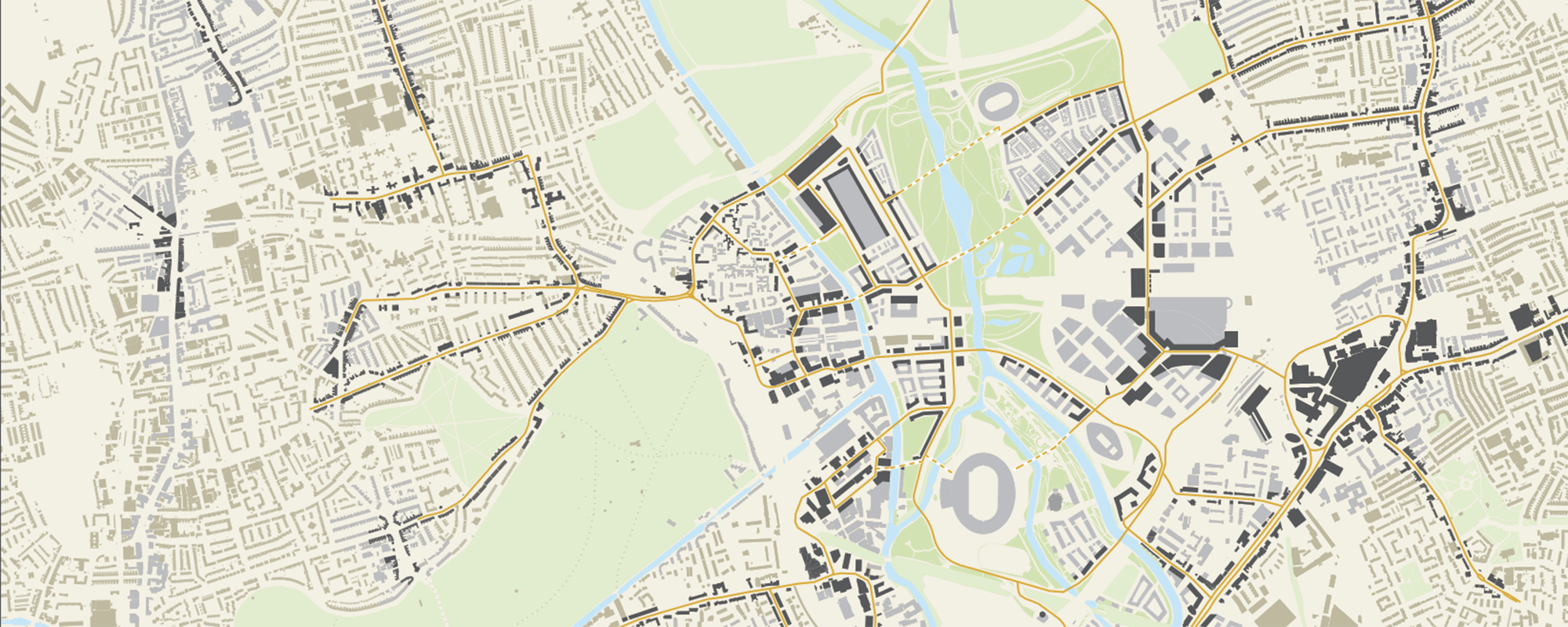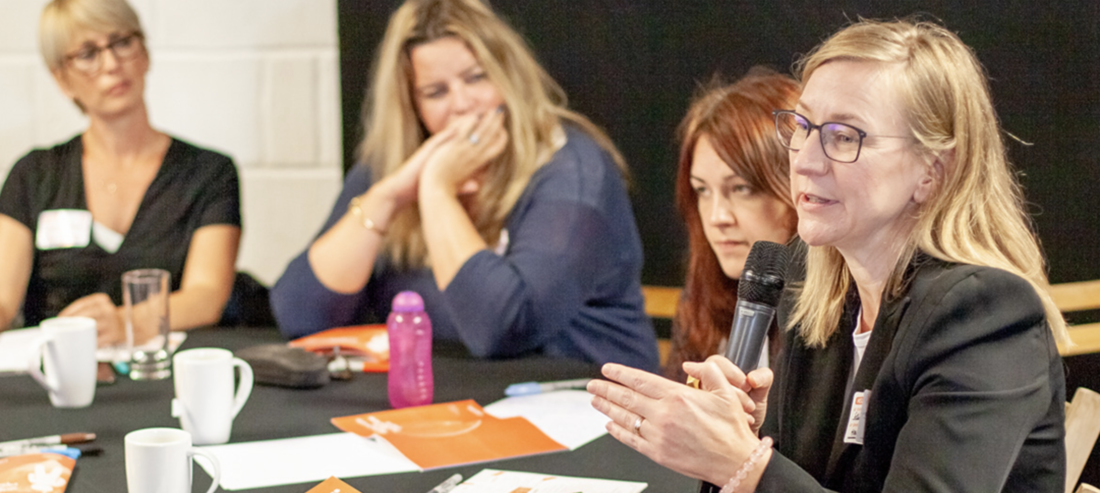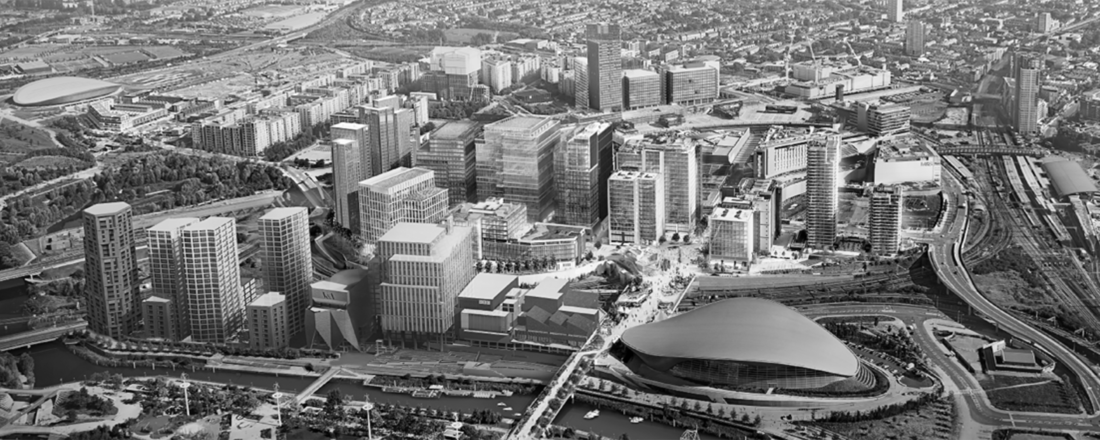Get updates from The Developer straight to your inbox Yes, please!
London’s Olympic legacy: “That feeling of normalness isn’t quite here yet”
We need to encourage people to consider it their own, says Selina Mason, director of masterplanning for Lendlease, in this interview on the evolution of the Olympic Park, from 2012 to IQL. Interview by Christine Murray

“Every time you come back to this place, it’s changed, and the people here have changed,” says Selina Mason, director of masterplanning at Lendlease.
We are standing in London’s 560-acre Queen Elizabeth Olympic Park, a project she has been involved with, on and off, since 2007 – first, working on the delivery of the original 2012 masterplan for the Olympic Delivery Authority, then on the post-games Transformation Masterplan for the London Legacy Development Corporation.
Now Mason is back on site with Lendlease and International Quarter London (IQL), a 22-acre gateway to the Olympic site with 58,000 sq ft of retail space, 4m sq ft of office space – for up to 25,000 people – and 333 homes.
With its several towers designed by Rogers Stirk Harbour + Partners, the £2.1bn new neighbourhood features an interesting mix of current and future office tenants, including Transport for London, Unicef, Cancer Research UK, the British Council, HMRC and the Financial Conduct Authority.
I am interviewing Mason just outside the Aquatics Centre, standing on what she calls the “processional route” from Westfield Shopping Centre through Lendlease’s new cluster to the Olympic Stadium, home to West Ham Football Club.
While her role for Lendlease extends beyond IQL to sites across Europe and the UK, London’s Olympic Park is a special place for Mason. To the sound of whirring cranes and banging construction on the nearby East Bank cultural development, I ask her to take me all the way back to the pre-Olympic site as she knew it, when she first started working on the 2012 Olympics.
“It was a really mixed bag, extraordinary in many ways,” Mason says. “It was a wild and slightly scary place then. The river was kind of hidden and secret. Not many people knew much about it.”
Back in 2012, the Lee Valley and marshes were often described as abandoned, but Mason says in fact there were significant and much-loved places there too, alongside the legendary “fridge mountain” and “very degraded” ex-industrial sites.
“It was a wild and slightly scary place then. The river was kind of hidden and secret. Not many people knew much about it”
“There were some amazing moments… of loved use,” says Mason, “like the beautiful little [Manor Garden] allotments right by the river and the cycling track.
“There were moments of intense activity and use, but they were somewhat hidden… We had to talk a lot about how we would replace what [locals] had here, and they are back on site now, with the cycle track in the north and allotments in the south.”
Much of the land, however, was dirty and in need of post-industrial remediation. Mason says because the park lies on the boundary of several east London boroughs – Newham, Hackney and Tower Hamlets – it was poorly connected and neglected.
“Because it was their back garden, they sort of left it and didn’t pay much attention to it. It was this inert environment, but that provided a huge opportunity for the GLA [Greater London Authority]… What it needed was thoughtful consideration about what infrastructure was needed to unlock it.”
Mason says the Olympics were always seen as an impetus – the means to a greater end: “In the back of the minds of most of the politicians such as Tessa Jowell and Ken Livingstone was to improve opportunities in the area.
“The people who lived in these boroughs didn’t have the same life chances as others in London, so how do we give them those opportunities? What can we do to transform their life chances for the better?”
“Now that people are actually using this place, we can get under the skin of how it’s being used”
Mason says this ambition to improve lives and personal outcomes makes the Queen Elizabeth Olympic Park and its surroundings an important case study for mass urban redevelopment.
“Now that people are actually using this place, we can get under the skin of how it’s being used.”
I ask Mason about the findings of a PhD research paper by landscape designer Dr Bridget Snaith, The Queen Elizabeth Olympic Park: Whose Values, Whose Benefits? which found that some local ethnic minorities in the population are under-represented in the north end of the park, suggesting they are using it less than other groups, while the south end attracts a more locally representative ratio of users.
Focus groups suggested the characteristics of the North Park would appeal to more white British people than other main British ethnic groups
Snaith writes: “Focus groups gave a strong indication that the aesthetic and programmatic characteristics of the North Park would appeal to more white British people than people from the other main British ethnic groups in the catchment of the Queen Elizabeth Olympic Park. The same empirical evidence suggested that the South Park was likely to appeal more equally to residents of all ethnicities.”
During fieldwork studies, Snaith found “the North Park was used generally by a far higher proportion of people from white ethnicities than would be found in the catchment population… [while] the South Park counts generally showed a ratio closer to, though not matching, the catchment population.”
If this is true, Mason says, we need to find other ways to welcome people in. “If we find it’s attractive to certain people but not others… we need to find other ways to create that attraction,” says Mason.
Mason says the Olympics were always seen as a means to a greater end: “What can we do to transform life chances for the better?”
Mason stresses that the process of urban development must be iterative, and a masterplan must not be the end point: “One of the things about masterplanning is that you spend a lot of time looking at the macro, and then having to investigate the micro. We make lots of assumptions and follow certain rules… on the basis that if you build connections people will use them.”
“You can build a building up remarkably quickly but changing the perception of place and how people behave takes a lot longer”
Time, not just design and demographics, must also be considered a factor: “In a place like this, which has been a very inert territory right on the edge of these boroughs… I think we should allow ourselves the thought that these things do take time, you have to build them over a longer period.
“You can build a building up remarkably quickly but changing the perception of place and how people behave takes a lot longer.”
As for IQL, while the masterplan is not that innovative – a business district on a grid, albeit pedestrian – there is no question its tenants and residents will benefit from the proximity of the park and its leisure facilities (swimming pool, velodrome…), not to mention the transport connections of Stratford’s nine rail lines. When East Bank completes, they will also be on the doorstep of a 550-seat Sadler’s Wells East theatre, BBC music studios and the museum outpost of V&A East.
But for now, this is still a construction site. That is why the definitive story of the London Olympics and its legacy impact cannot quite be written yet. The place and its people are still shifting and changing, which makes it hard to grasp its character. It is not really a neighbourhood yet – still more outpost than back garden: “It’s about creating those streets where it’s just easy and comfortable to walk down and meander into the park,” Mason says. “It’s that feeling of normalness that still isn’t quite here yet.
“We should think quite carefully about how [we] nurture those connections and sense of place, and encourage more people to want to explore a new territory and consider it their own.”
This year’s Festival of Place is happening on 7 July 2020 – go to www.festivalofplace.co.uk for updates on tickets and speakers.
Listen to the podcast by clicking on the link above and sign up to The Developer Weekly to be updated when new episodes go online.
Sign up to our newsletter
Get updates from The Developer straight to your inbox
Thanks to our organisation members
© Festival of Place - Tweak Ltd., 124 City Road, London, EC1V 2NX. Tel: 020 3326 7238
© Festival of Place - Tweak Ltd., 124 City Road, London, EC1V 2NX. Tel: 020 3326 7238


